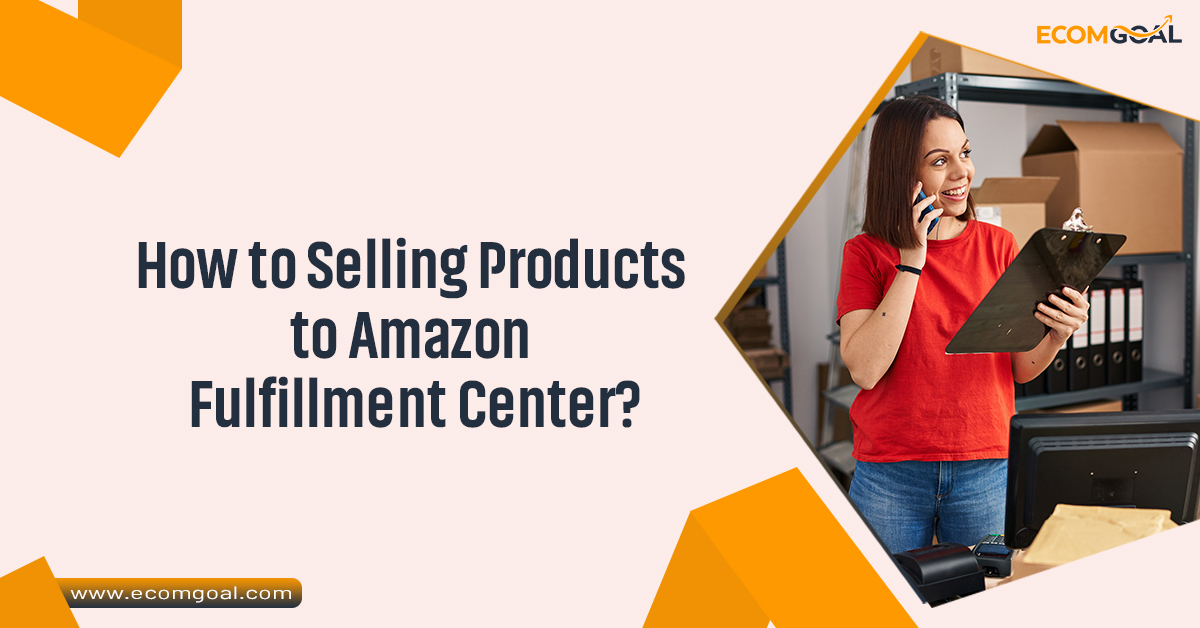
How to selling products to Amazon Fulfillment center? In today’s digital marketplace, selling products on Amazon has become one of the most popular ways to reach millions of customers worldwide. One of the easiest methods for new and seasoned sellers alike is using Amazon FBA (Fulfillment by Amazon). With FBA, sellers send their products directly to Amazon’s fulfillment centers, and Amazon handles storage, packing, shipping, and even customer service.
If you’re thinking about selling products through Amazon’s fulfillment centers but aren’t sure where to start, you’re in the right place. In this guide, we will explain how to selling products to Amazon Fulfillment center, from setting up your account to getting your products into Amazon’s warehouses.
Step-by-Step Guide on How to Selling Products to Amazon Fulfillment Center?
Here is a guide to 7 steps on how to selling products to Amazon Fulfillment center:
Step 1: Set Up Your Amazon Seller Account
Before anything else, create your Amazon Seller Central account. There are two types of accounts:
- Individual Account – Perfect if you expect to sell under 40 products monthly. No monthly fee, but you pay $0.99 each sale.
- Professional Account – Recommended for sellers expecting to move more than 40 products monthly. Costs $39.99/month but offers more tools and options.
To register, visit Amazon Seller Central & follow the steps. You’ll need:
- A valid email address
- A credit card
- Government ID
- Tax information
- Bank account details
After your account is activated, you can begin listing products.
Step 2: Choose Your Products Wisely
Before sending anything to Amazon, you need to decide what to sell. Here are some things to consider:
- Demand: Use tools like Jungle Scout, Helium 10, or Amazon’s Best Sellers lists to find products that people are actively buying.
- Competition: Avoid overly saturated markets unless you have a competitive advantage.
- Profit Margins: Make sure the price you can sell at leaves room for Amazon’s fees, shipping costs, and profit.
Pro Tip: Light, durable, and non-fragile products tend to perform better with FBA because they cost less to ship and are less prone to damage.
Step 3: List Your Products on Amazon
After selecting your products, you’ll be required to build a product listing. Here’s how:
- Log in to Seller Central.
- Go to Inventory > Add a Product.
- If the item is available on Amazon, you just need to match your listing to it.
- For a new product, you’ll have to create a fresh listing, which includes:
- Product title
- Description
- Bullet points
- High-quality images
- Keywords
Be sure to make your listing as attractive and detailed as possible. Good listings sell better!
Step 4: Prepare Your Products for Amazon FBA
Once your listings are live, you need to prepare your inventory for shipment to Amazon’s fulfillment centers. Amazon enforces strict rules for packaging and labeling. Here’s what you’ll need to do:
- Labeling Products: Each item must have a scannable barcode (FNSKU label) that identifies it as yours. You can print these labels from Seller Central or pay Amazon to label your products for you.
- Packaging: Items should be individually packaged and protected. Protect your items with poly bags, bubble wrap, or boxes when necessary.
- Expiration Dates: If your items have an expiration date (like food or beauty products), the date must be clearly printed on the product packaging.
Make sure you read Amazon’s FBA Product Preparation guidelines carefully to avoid delays or rejections.
Step 5: Create a Shipment Plan
After preparing your products, it’s time to create a shipment plan:
- In Seller Central, go to Manage Inventory.
- Select the products you want to send and choose Send/Replenish Inventory.
- Enter information about:
- How many units you are sending
- Packaging type (individual or case-packed)
- Carrier and shipping method
Amazon will tell you which fulfillment centers you need to send your products to. Sometimes, inventory must be allocated across various fulfillment centers.
Step 6: Ship Your Products to Amazon
Now it’s time to physically get your products to Amazon’s warehouses:
- Shipping Options: You can use Amazon’s partnered carriers (like UPS) for discounted rates, or choose your own carrier.
- Label Your Boxes: Each box must have an Amazon FBA shipment label (generated during the shipment plan process).
- Confirm and Track: After shipping, confirm the shipment in Seller Central. The progress of your shipment to the fulfillment center can be tracked.
Remember, Amazon inspects your shipment upon arrival. If you didn’t follow their guidelines, they might reject or delay your inventory.
Step 7: Manage and Monitor Your Inventory
Once your products arrive at Amazon, they’ll be listed as “Fulfilled by Amazon.” Customers can now purchase your items with Prime shipping benefits.
As a seller, you need to:
- Monitor Inventory Levels: Keep an eye on stock so you don’t run out.
- Manage Pricing: Use tools like automated repricing to stay competitive.
- Analyze Performance: Seller Central provides insights into sales, returns, and customer feedback.
Running out of stock or having poor performance can hurt your chances of winning the Buy Box (the main “Add to Cart” button), so regular monitoring is key.
Benefits of Selling Through Amazon FBA
Why bother going through all this effort to use Amazon’s fulfillment centers? Here’s why it’s worth it:
- Prime Eligibility: Your products automatically qualify for Amazon Prime shipping.
- Trust Factor: Products fulfilled by Amazon generally inspire more customer confidence.
- Less Work: Amazon oversees storage, shipping, returns, and customer service for you.
- Scalability: You can focus on growing your business without worrying about logistics.
Final Thoughts
How to selling products to Amazon Fulfillment center? Selling products through Amazon’s fulfillment centers is one of the smartest ways to build an e-commerce business today. It takes some work to get set up — from choosing the right products to shipping them correctly — but once you’re rolling, Amazon’s massive infrastructure works for you.
Focus on delivering quality products, excellent listings, and top-notch customer experience, and you’ll be well on your way to a thriving Amazon FBA business.
Ready to get started? Your customers are waiting!

Hello, I am an E-commerce Expert with extensive experience providing services to numerous e-commerce brands and individuals since 2017. My primary areas of expertise include the Amazon, Walmart, and Shopify marketplaces. Linkedin
